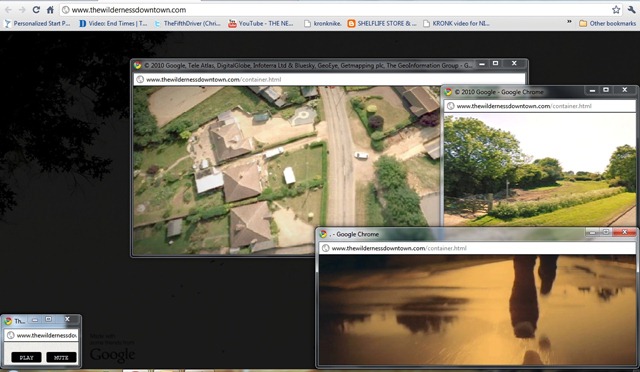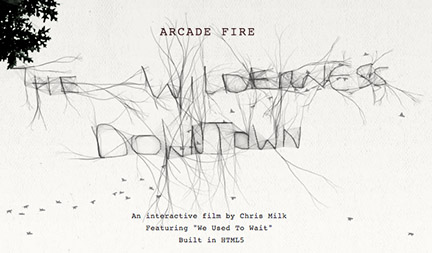
Innovative Promotion Uses Video, Google Earth, HTML5 To Create
If you haven’t seen this website yet, have a look: http://www.thewildernessdowntown.com/
It’s a promotion for the rock band Arcade Fire’s song “We Used to Wait”, and it uses an array of interactive features which customize the experience for each user. More than just a website, it’s actually described as an “interactive film” by Chris Milk using the latest website coding technology known as HTML 5. More than just a promotion, it’s one of the freshest things I have seen online in quite a while.

Yet “interactive” doesn’t quite describe the work as much as “customized online experience” does for me. Customized experiences online are hardly innovative these days (online banking, gmail, and corny ecards have offered web users customized experiences for years). What’s interesting here is the way in which this website succeeds in evoking deeply personal childhood memories for each user through technology.
Before anything starts, you’re asked to type in your hometown address. Why, you’re not exactly sure until the music starts, and away you go for a one way trip through Nostalgia Lane.
Already you sense that something new is happening when you see images of a running child played across a number of narrow-paned browser windows which open and close in time with the music. The imagery then moves towards a steady birds-eye view of a town below along with street views. Soon you realize this is not just any town — it’s your hometown. The camera then pans around your hometown street.
It’s as if the band commandeered your computer and you’re along for a ride down memory lane, using the Google street-view images tinged with sepia-tone.

Harnessing the immense international database of Google’s aerial and street views, the film pieces together a mosaic of content carefully crafted to make you well-up with nostalgia — whether you grew up in Manhattan, NY, Manhattan, KS, or anywhere else that registered with the address you typed in at the beginning.
There are other tricks and thematic devices at play here, too including a beautiful flock of birds which fly around, CGI trees which take root and grow over the stock Google imagery. There’s even an interactive virtual postcard you can send to the younger version of yourself which employs a font that can only be described as “living” — try it and you’ll see what I mean.
Gimmicky? Perhaps. It is a bit heavy-handed, in that you are always on guard waiting for what’s next based on the fact that you know there’s going to be this customized element from your childhood address. But I think that this is quite successful overall in that it got me to listen to a band’s music that I might not be interested in otherwise. (Heck, it also even got me to write a blog post about it.)
Music is a powerful tool for connecting with people emotionally. I’m old enough to remember a simpler time when you turned on the TV and there were music videos playing 24/7. They were pretty effective at stirring emotions — love, anger, wistfulness, etc. For some odd reason, music videos have been out of vogue for years. This opens the door for a whole genre of content that be created just for you, using personal details to connect directly with you. Music videos are just the beginning — ads, offers and promotions will continue to become hyper-specific.
This is the whole point of HTML5. Apple has been promoting this technology as one which will propel the web forward in new ways. The New York Times just today published a front-page article touting privacy concerns over the new ways in which HTML5 will share data.
I can definitely see a time in the future when you won’t need to provide the details, your computer will already know them. In fact, Google probably already does.


